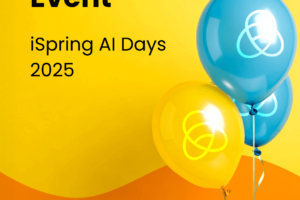
Digital L&D Ecosystem: Tools That Help Plan Better And Act Faster

A Connected Digital Learning Ecosystem Empowers HR
The accelerating pace of change in today’s workplace demands a new approach to workforce development. Skills are becoming obsolete faster, roles are shifting dynamically, and organizations are under increasing pressure to reskill, upskill, and redeploy talent rapidly. In this evolving landscape, the Learning and Development (L&D) function—and its alignment with Human Resources (HR) planning—has never been more critical. Enter the digital L&D ecosystem.
This isn’t just about eLearning or Learning Management System (LMS) platforms. The modern digital L&D ecosystem is a robust, interconnected network of tools and technologies that support learning at speed and scale. It empowers HR teams to move beyond administrative planning to strategic, agile decision-making supported by data, automation, and seamless User Experiences. In this article, we explore the core components of the digital L&D ecosystem, the role each plays in strategic HR planning, and how they help organizations respond faster, smarter, and with greater impact.
Why A Digital L&D Ecosystem Matters
Traditional L&D systems were designed for static, linear programs; think compliance training or annual development plans. Today, learning must be:
- Continuous and embedded in the flow of work.
- Personalized to learner needs.
- Data-informed and outcome-driven.
- Scalable across a distributed workforce.
A modern ecosystem enables exactly that. It helps HR:
- Identify skills gaps quickly.
- Align learning initiatives with business strategy.
- Monitor progress in real time.
- Adapt faster to organizational shifts.
In short, the digital L&D ecosystem is the engine behind agile workforce planning.
Core Components Of A Modern Digital L&D Ecosystem
Learning Management Systems
LMS platforms remain foundational, offering course delivery, progress tracking, and compliance management. However, today’s LMS tools are evolving to include:
- AI-driven content recommendations.
- Mobile-first learning..
- Gamification and social learning features
- Why it matters
Enables centralized oversight while supporting diverse learning needs.
Learning Experience Platforms
Learning Experience Platforms (LXPs) go beyond structured training by offering:
- Personalized learning journeys.
- Curated content from multiple sources.
- User-driven discovery and social features.
- Why it matters
Empowers employees to take ownership of their learning and explore beyond mandatory programs.
Skills Intelligence Tools
These tools help organizations map current skills, predict future needs, and identify gaps. They use AI and analytics to:
- Tag skills to roles and tasks.
- Recommend training based on job profiles.
- Support internal mobility and career pathing.
- Why it matters
Aligns L&D programs directly with strategic workforce planning.
Content Authoring And Curation Tools
These tools allow teams to quickly create or customize learning materials. They include:
- Rapid eLearning development platforms.
- Content libraries (like LinkedIn Learning, Coursera, etc.)
- Curation engines that pull relevant resources automatically.
- Why it matters
Keeps learning content relevant, timely, and scalable.
HRIS And Talent Management Systems
Integrated with learning platforms, HRIS systems provide:
- Employee lifecycle data.
- Performance insights.
- Succession planning support.
- Why it matters
Helps L&D initiatives tie back to broader talent goals.
Analytics And Reporting Dashboards
Real-time data visualization tools that track:
- Learning engagement.
- Skill development trends.
- Business impact metrics (e.g., productivity, retention)
- Why it matters
Enables evidence-based planning and continuous improvement.
Communication And Collaboration Tools
Platforms like Slack, MS Teams, and Zoom are becoming integral to L&D. They support:
- Peer-to-peer learning.
- Virtual workshops and coaching.
- Real-time feedback loops.
- Why it matters
Embeds learning in everyday workflows.
No-Code/Low-Code Platforms
Low-code/no-code (LC/NC) tools allow HR and L&D teams to:
- Build custom dashboards or onboarding portals.
- Automate learning workflows (e.g., enrollments, nudges, reporting)
- Rapidly test and iterate new processes.
- Why it matters
Adds flexibility and speed to the ecosystem without IT dependency.
How The Ecosystem Drives Strategic HR Planning
The strength of a digital L&D ecosystem lies in how well its components integrate to deliver insights and outcomes that support agile HR planning.
- Forecasting and readiness
Skills intelligence tools combined with LMS/LXP data help HR leaders anticipate future needs and readiness gaps. - Speed to action
LC/NC automation shortens time-to-launch for training programs or planning tools. - Data-driven decisions
Analytics reveal what’s working, what’s not, and where to pivot, informing everything from headcount to learning budgets. - Internal mobility
Career pathing, driven by skills data and learning history, enables better succession and redeployment planning. - Personalization at scale
The ecosystem can deliver individualized learning experiences to thousands of employees simultaneously.
Building A Future-Ready Digital L&D Ecosystem: Best Practices
- Start with strategy
Map your business goals to workforce capabilities. Let this guide your tool selection and integration roadmap. - Ensure interoperability
Choose platforms that integrate well with each other. APIs, single sign-on, and shared data layers are key. - Empower Nontechnical users
Use LC/NC tools to reduce IT bottlenecks and give HR/L&D teams more autonomy to create, test, and improve tools. - Focus on experience
The User Experience—whether for learners or administrators—must be intuitive, engaging, and accessible across devices. - Embed learning in the flow of work
Integrate learning into tools your teams already use, like email, Slack, or project management platforms. - Adopt Agile mindsets
Build fast, measure continuously, and improve often. Treat L&D planning like product development.
Case In Point: Agile Learning In Action
A global technology company used a combination of LMS, LXP, skills intelligence, and LC/NC tools to transform its learning strategy. Facing a skills gap in AI and cloud infrastructure, it:
- Identified high-potential employees via internal talent data.
- Mapped required skills using a skills intelligence platform.
- Launched personalized learning journeys within three weeks.
- Automated enrollment, reminders, and progress tracking using a no-code app.
- Reported a 40% skill proficiency increase in 6 months.
The result? Faster upskilling, improved retention, and a clear line of sight between HR planning and business readiness.
The Evolving Role Of HR And L&D Teams
With this ecosystem in place, HR and L&D leaders become strategic enablers. Their roles shift:
- From training coordinators to experience designers.
- From reactive planners to agile workforce architects.
- From support functions to value drivers directly influencing business outcomes.
Conclusion: Empowering HR With The Right Tools For The Right Time
In a rapidly evolving business landscape, agility, speed, and precision are no longer optional; they’re foundational to workforce success. A well-integrated digital L&D ecosystem equips HR and L&D leaders to meet these demands with confidence. By combining tools like LXPs, skills intelligence platforms, analytics dashboards, and LC/NC applications, organizations can turn fragmented learning efforts into a cohesive, strategic advantage.
This ecosystem doesn’t just help you respond to change; it positions you to lead it. With smarter planning, data-driven decision-making, and the ability to personalize learning at scale, HR functions can shift from reactive support roles to proactive architects of business growth.
The message is clear: building a future-ready workforce requires future-ready tools. The digital L&D ecosystem is your launchpad. Invest in it: not just as a tech stack, but as a culture shift toward continuous learning, agile planning, and people-first innovation. Ready to evolve your L&D strategy? Build the ecosystem that supports every learner, and every business goal.
Source link



